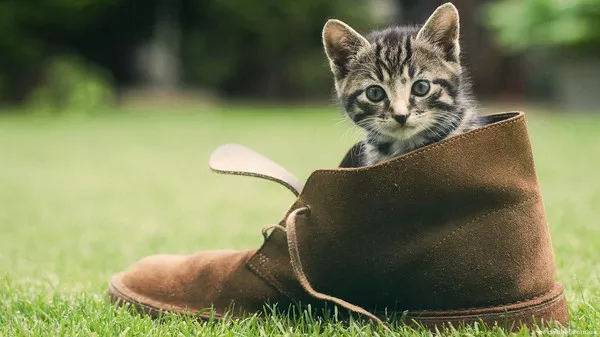Calico cats, with their distinctive tri-colored coats, have captured the hearts of cat enthusiasts worldwide. Beyond their striking appearance, these feline companions are also fascinating creatures with unique traits and characteristics. Among the myriad of questions that arise when considering calico cats, one common inquiry pertains to their lifespan in human years. In this article, we delve into the intricacies of calico cat longevity, exploring factors that influence their lifespan and providing insights into how long these beloved pets typically live.
What Defines a Calico Cat?
Before delving into their lifespan, it’s essential to understand what distinguishes calico cats from other feline breeds. Calico refers to a specific coat pattern rather than a breed itself. Typically, calico cats exhibit a combination of three distinct colors: white, black, and orange (or ginger). These colors appear in irregular patches across the cat’s fur, creating a visually striking mosaic effect. While the term “calico” is commonly used in the United States, these cats are also referred to as tortoiseshell-and-white in some regions.
Beyond their vibrant coats, calico cats may belong to various breeds, including domestic shorthairs, Persians, Maine Coons, and American Shorthairs, among others. Despite differences in breed, calico cats share certain physical and behavioral traits that contribute to their unique charm.
Factors Influencing Lifespan
Several factors influence the lifespan of calico cats, just as they do for other feline companions. Understanding these factors can provide insights into how long a calico cat is likely to live in human years.
Genetics: Genetic predispositions play a significant role in determining a calico cat’s lifespan. While the calico coat pattern itself is not directly linked to longevity, underlying genetic traits inherited from the cat’s parents can impact overall health and lifespan. Responsible breeding practices aimed at minimizing hereditary health issues can positively influence a calico cat’s lifespan.
Nutrition: Like all pets, calico cats require a balanced diet to thrive. Proper nutrition is essential for maintaining optimal health and supporting longevity. A diet rich in high-quality protein, vitamins, and minerals can help prevent common feline health problems and contribute to a calico cat’s overall well-being.
Healthcare: Regular veterinary care is crucial for ensuring the long-term health of calico cats. Routine check-ups, vaccinations, parasite control, and dental care are essential components of preventive healthcare. Prompt identification and treatment of any health issues can help extend a calico cat’s lifespan and improve their quality of life.
Environment: The environment in which a calico cat lives can impact its lifespan. Indoor cats generally have longer lifespans than outdoor cats due to reduced exposure to environmental hazards such as traffic accidents, predation, and infectious diseases. Providing a safe and enriching indoor environment can help maximize a calico cat’s lifespan.
Lifestyle Factors: Lifestyle factors such as exercise, mental stimulation, and social interaction also play a role in determining a calico cat’s lifespan. Regular play sessions, access to scratching posts and toys, and opportunities for socialization with humans and other pets can contribute to a calico cat’s overall health and well-being.
Average Lifespan of Calico Cats
While individual lifespans can vary, calico cats typically live an average of 12 to 15 years, with some cats reaching 18 years or more with proper care. Factors such as genetics, nutrition, healthcare, environment, and lifestyle all influence how long a calico cat is likely to live in human years.
It’s important to note that calico cats, like all living beings, are susceptible to age-related health issues as they grow older. Common health problems that may affect calico cats in their senior years include arthritis, dental disease, kidney disease, hyperthyroidism, and cancer. Regular veterinary check-ups can help detect and manage these conditions early, potentially extending a calico cat’s lifespan and improving their quality of life.
Maximizing Lifespan and Quality of Life
While genetics play a significant role in determining a calico cat’s lifespan, pet owners can take proactive steps to maximize their feline companion’s longevity and quality of life.
Provide a Balanced Diet: Feed your calico cat a nutritious diet tailored to their age, weight, and activity level. Avoid overfeeding and monitor their calorie intake to prevent obesity, which can increase the risk of various health problems.
See Also:What Is the Best Brush to Use on a Calico Cat?
Regular Veterinary Care: Schedule annual wellness exams and follow your veterinarian’s recommendations for vaccinations, parasite control, dental care, and preventive screenings. Early detection and treatment of health issues can significantly impact a calico cat’s lifespan.
Create a Safe Environment: Minimize potential hazards in your home, such as toxic plants, household chemicals, and small objects that could be swallowed. Ensure your calico cat has access to fresh water, a clean litter box, and a comfortable resting area.
Promote Exercise and Mental Stimulation: Engage your calico cat in regular play sessions to keep them physically active and mentally stimulated. Provide toys, scratching posts, and interactive feeders to prevent boredom and encourage natural behaviors.
Monitor Behavior and Health: Pay attention to changes in your calico cat’s behavior, appetite, litter box habits, and overall appearance. Report any concerns to your veterinarian promptly and seek medical attention if necessary.
By prioritizing your calico cat’s health and well-being, you can help ensure they live a long, happy, and fulfilling life by your side.
Conclusion
While there is no definitive answer to how long a calico cat lives in human years, understanding the factors that influence their lifespan can help pet owners make informed decisions about their care. By providing a nutritious diet, regular veterinary care, a safe environment, and opportunities for exercise and mental stimulation, pet owners can maximize their calico cat’s longevity and quality of life. Ultimately, the bond between a pet owner and their calico cat transcends mere numbers, enriching each other’s lives with love, companionship, and cherished memories.
Related Topics:
Longevity Secrets of Indoor Calico Cats: A Comprehensive Guide
Healthy Weight Parameters for a 4-Month-Old Calico Cat
Why Calico Cats Get Darker?



























